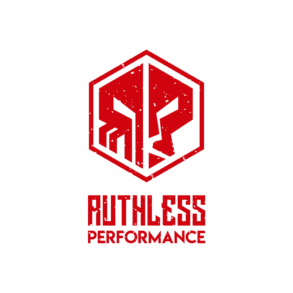Strength Training is an emerging field in the sport of swimming. As more and more coaches, parents, and athletes begin to understand the extent to which a strength training program can help drop swim times and reduce injury, the more I’m approached by a growing and widening audience about, not only the Ruthless Athletic‘s Dryland Training for Swimmers Program, but also, general tips for using land-based techniques to get better in the pool.
As this audience widens, the frequency of parents approaching me to develop programs for their age-group swimmers increases as well. There’s a great deal of misinformation in the mainstream media about various forms of strength training for swimmers in general, but even moreso for youth athletes and youth or age-group swimmers.
The information herein are some quick tips and answers to some very frequently asked questions which I receive from both parents, coaches, athletic administrators, and even these young athletes themselves.
Strength Training is NOT Detrimental to Youth Athletes
The idea that strength training is detrimental to prepubescent and pubescent athletes transcends the sport of swimming. Parents, coaches, and entire athletic staffs may fall prey to this line of thinking.
As mentioned in this fantastic piece by Mike Robertson: “the stresses in sport far exceed what happens in the weight room!” Mike goes on to say “For example, in strength training a good measure of strength would be if you could squat or deadlift 2x your body weight. In other words if you weighed 175, if you could squat and/or deadlift 350, you’d be considered strong…”
…And then follows with some information that most people intuitively understand, but seem to ignore with regards to strength training…
“However, the forces that you see in everyday events like running (4-6x body weight) and jumping (6-10x body weight) far exceed anything done in the weight room.”
Speed and Agility Drills are Overlooked for Swimmers
Injuries in the pool are actually rather rare. Swimmers may develop chronic, or overuse injuries from their time in the pool, but the likelihood of sports injuries increases as an under-prepared swimmer finds themselves in a precarious position on land.
Often times, swimmers may find themselves in a pick-up game of football, volleyball, or some other higher-impact land sport where an injury could occur. Because these swimmers are so unprepared for this medium (court, field, track, etc.) they run a higher risk of injury than their friends who may participate in some of the various land-based sports.
While preparing for these kind of extenuating circumstances may seem like overkill, the number of coaches who’ve showed up to practice to then be faced with an injured star swimmer from similar circumstances to the aforementioned example is astronomical.
The Goal of Strength Training is Not the Goal of Swimming Practice
Swimming coaches tend to have misconceptions about the goals of strength training; a problem propagated extensively within the field. Coaches tend to want land-based exercise to replicate what is done in the pool, however, while the goals of both are the betterment of the athlete, the applications are entirely different.
Because pool workouts develop skill work and energy system development, coaches mistakenly believe strength training should be done in a similar way, usually with little rest, high heart rates, and in a manner which replicates the actions of sport; this view is plainly wrong.
Land work should help restore optimal function to the various joints and postures which the swimming strokes can hinder. By spending hours in the pool completing high yardage training, then coupling this with ‘sport specific work’ (such as swim cable trainers), you are effectively exacerbating shoulder and hip ailments common to overuse injuries.
To have the most effective ‘sport specific’ strength training, a program should consist of various counter measures. This ensures a neutral posture onto which the swimming coaches can pack on yardage and intensity. Doing so in addition to more of the same exercises on land will definitively lead to pain, burnout, and injury.
Consider the above when trying to formulate a program for your youth athletes. Remember, Ruthless Athletics does offer coaching services to individual athletes, as well as, entire sports teams. For more information on these services, swim team consulting, details on any of the various other services provided, or to simply ask a general question, feel free to reach out at RuthlessAthletics@gmail.com.

Pingback: Best of TFR’s Featured Fitness Content: Volume 35 | The Fitness Resource